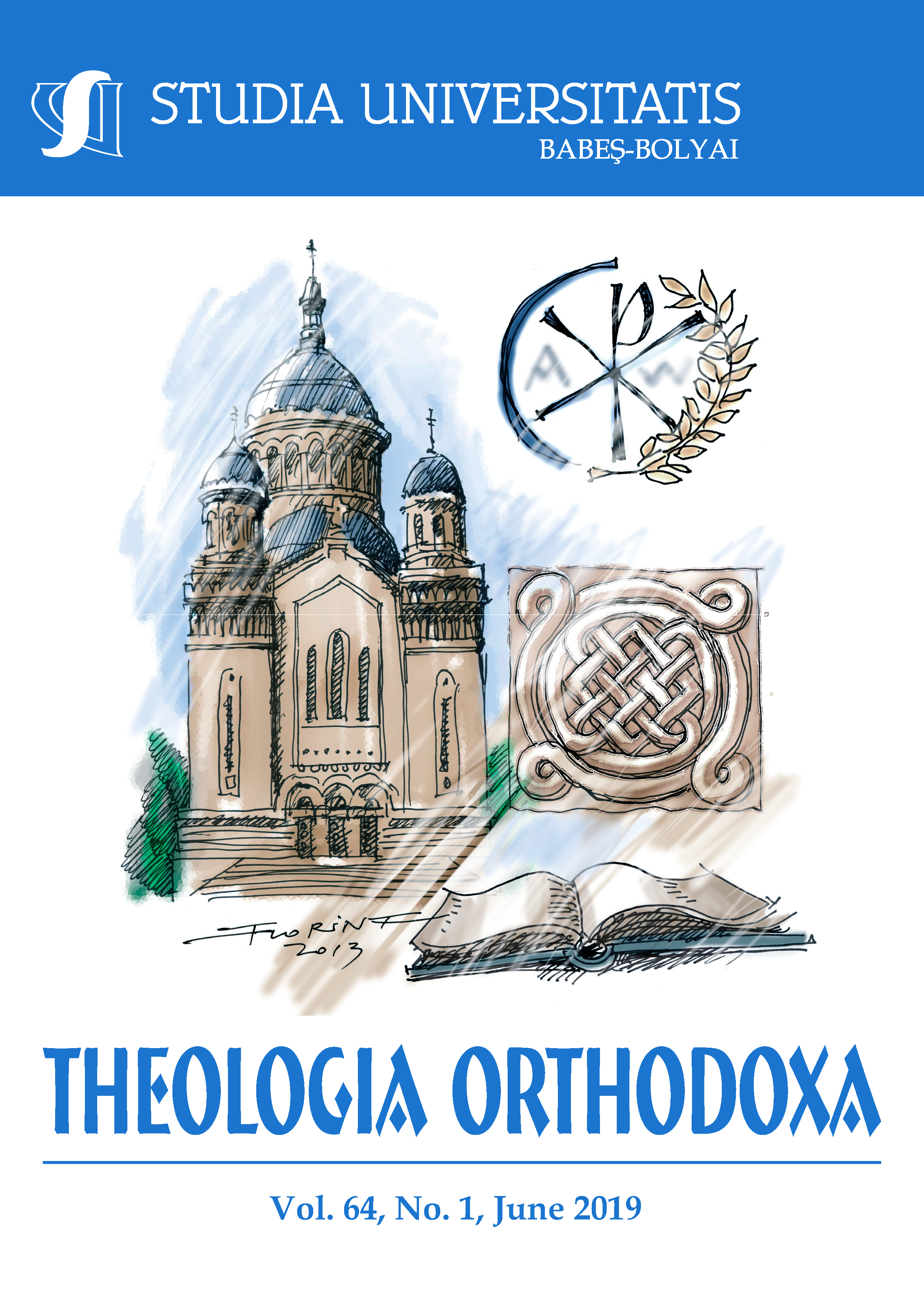BASIL THE GREAT ON THE ESCHATOLOGICAL UNITY OF THE BODY OF CHRIST
DOI:
https://doi.org/10.24193/subbto.2019.1.02Keywords:
Saint Basil the Great, Unity of Church, Eschatology, Body of Christ, Eastern OrthodoxyAbstract
Basil the Great in the fourth century AD argued that all material entities are constantly carried away by motion. He spoke of the flow of existence as ever pressing on and passing away and never stopping in its course. His general conjecture in respect with spatiotemporal existents was that motion and time constantly shift and twist their ephemeral selves, leading them to annihilation. Hence, no entity that is subject to time persists so as to preserve its essential core. The Body of Christ in its temporal dimension, i.e. the visible Body, may also follow a sort of current. It may also experience constant change. The lack of ontological stability is the main characteristic of all unredeemed existents. The Body of Christ, on the other hand, is not a mere temporal entity. It has an eschatological self that will never be destroyed. This eschatological unity will never fade away. It is ordered by a different kind of time. This article aims to shed light on certain foundational aspects of Basil’s theory of eschatological unity and of the changing self. It endeavors to explicate Basil’s eschatological threads presented in the Hexameron. It attempts to demonstrate that Basil’s subtle and nuanced analysis of the subject offers an explanatory framework capable of making sense of more recent events in ecclesiastical history.
References
Aetius. “The Syntagmation.” In L.R. Wickham. “The Syntagmation of Aetius the Anomean.” The Journal of Theological Studies 19, no. 2 (1968): 532–69.
Aristotle. De Caelo. In Paul Moraux, Aristote. Du ciel, Paris: Les Belles Lettres, 1965.
———. Physics. Edited by William D. Ross. In Aristotelis Physica. Corrected Edition. Scriptorum classicorum bibliotheca Oxoniensis. Oxford: Clarendon Press, 1966.
Basil the Great. Contra Eunomium. In Patrologiae Cursus Completus, Series Graeca 29. Edited by Jean-Paul Migne. Paris: Migne, 1857–1866. English translation in Mark Del Cogliano and Andrew Radde-Gallwitz. St. Basil of Caesarea. Against Eunomius. Washington, DC: The Catholic University of America Press, 2011.
———. De judicio Dei. In Patrologiae Cursus Completus, Series Graeca 31. Edited by Jean-Paul Migne. Paris: Migne, 1857–1866. English translation by M. Monica Wagner in Saint Basil: The Ascetic Works. Fathers of the Church 9. New York: The Catholic University of America Press, 1950.
———. De spiritu sancto. Migne PG 32:67-218. English translation by Blomfield Jackson NPNF 8.2. Grand Rapids: Wm. B. Eerdmans, 1968.
———. Hexaemeron. In Homélies sur l’Hexaéméron. Deuxième édition. Texte grec, introduction et traduction de Stanislaus Giet. Sources Chrétiennes 26. Paris: Éditions du Cerf, 1968. English translation in Phillip Schaff and Henry Wace, Basil: Letters and Select Works. Nicene and Post-Nicene Fathers, Second series. Vol. 8. Peabody, MA: Hendrickson, 2004.
Eunomius. Liber Apologeticus. In Richard Paul Vaggione, Eunomius: The Extant Works. Oxford Early Christian Texts. First Edition, 3–78. Oxford: Clarendon Press, 1987.
Callahan, John F. “Greek Philosophy and the Cappadocian Cosmology.” Dumbarton Oaks Papers 12 (1958): 29-57.
Druzhinina, Olga. “The Ecclesiology of St Basil the Great: A Trinitarian Approach to the Life of the Church.” Dissertation. University of Manchester, 2015.
Meyendorff, John. Imperial Unity and Christian Divisions. Crestwood, NY: St. Vladimir’s Seminary Press, 1989.
Rist, John. “Basil’s ‘Neoplatonism’: Its Background and Nature.” in Fedwick, Paul Jonathan. Basil of Caesarea, Christian, Humanist, Ascetic: a Sixteen-Hundredth Anniversary Symposium. Toronto: Pontifical Institute of Mediaeval Studies, 1981, 137-220.
Romelli, Hilaria. “Basil and Apokatastasis: New Findings.” Journal of Early Christian History 4.2 (2014): 116–136.
Sambursky, Shmuel & Pines, Salomon. The Concept of Time in Late Neoplatonism: Texts with Translation, Introduction, and Notes. Jerusalem: Israel Academy of Sciences and Humanities, Section of Humanities, 1971.
Downloads
Published
How to Cite
Issue
Section
License
Copyright (c) 2019 Studia Universitatis Babeș-Bolyai Theologia Orthodoxa

This work is licensed under a Creative Commons Attribution-NonCommercial-NoDerivatives 4.0 International License.





 ISSN (print): 1224-0869, ISSN (online): 2065-9474, ISSN-L: 2065-9474
ISSN (print): 1224-0869, ISSN (online): 2065-9474, ISSN-L: 2065-9474